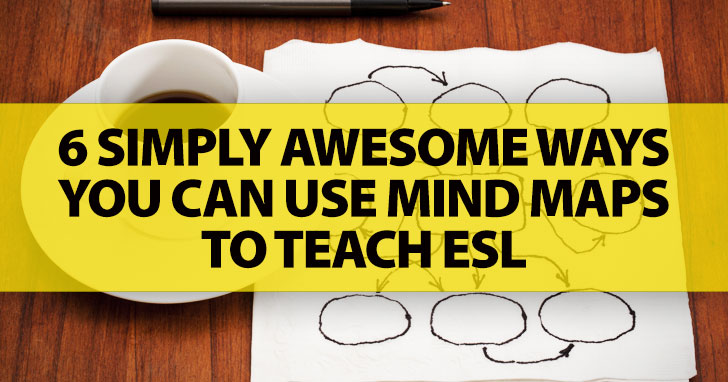I'm sure most of you, if not all of you, are familiar with mind maps.
Why? Well, because they are simply awesome. They can be used in a bunch of different ways and most teachers use them in their ESL lessons. And, why wouldn't they? Mind maps are an amazing way to present new material, to dip into students creativity, and even help them remember things they have learned previously and need to refresh. Great, right? Now, believe it or not, that's not only what they are useful for. In addition to using them with students, ESL teachers can also benefit greatly from using mind maps from the professional point of view. How, you might ask? Take a look at these great tips for how to use mind mapping outside the lesson.

How to Use Mind Maps for Teaching ESL
-
1
For Planning
Whenever you are planning something, mind maps help you get all the relevant information down in one place and organize it easily.Mind maps are one of the ESL teachers' best allies for any and all planning tasks, since they provide a clear and visual overview of what needs to be planned. Whenever you are planning something, mind maps help you get all the relevant information down in one place and organize it easily. They can be used for planning any piece of writing. Here are some examples of what can be planned using mind maps.
- Lessons
- Assignment time lines
- Class curriculum for the school year
- Class Projects
-
2
For Organizing
For ESL teachers, organization is essential. After all, simply planning what you are going to do is not enough if it isn't organized. Mind maps are the perfect tool to create a clear structure of what you have planned. So what can we organize using mind maps? Take a look.
- Lesson content
- Meetings with parents or even other teachers
- Parent teacher interviews
- Class Projects
-
3
For Remembering
I'm quite sure all of you have plenty of things to remember, right? Teaching is just packed with details and information that needs to be recalled. Also, for those of us who are busy, forgetting is always a risk. Mind mapping can also help out in this area since it enables us to associate ideas to other ideas. Also, there's no need to write full sentences. Jotting down words and linking them can go a long way toward helping us review and recall in an efficient and organized way. Here are but a few examples of things that might need remembering:
- Events
- Lesson plan for that day or week
- Special student/class needs
-
4
For Creativity
Being a teacher requires a great deal of creativity. A lot of what we do with our students doesn't come from a book but out of our heads. And, let's be real, there are times being creative is not such an easy task. This is where mind maps come in handy, because they liberate the mind from linear thinking and allow fresh ideas to flow easily. If you consider every item in a mind map as the center of another mind map the possibilities are endless. Let's look at some examples where creativity can come in handy:
- Creating or improving the curriculum
- Creating games or other fun activities
- Creating tests of assessment activities
-
5
For Problem Solving
Sadly for all of us, problems are just about everywhere. As teachers, there are many issues we need to deal with in any and almost every class. Mind maps can be very useful in seeing all the issues and how they relate to one other. They are also amazing when we need to get an overview of different aspects of the difficult situation.
They can help us:- Find solutions to class behavior problems
- Find alternatives to teaching techniques
- Create better and more efficient lesson plans
-
6
For Taking Notes
Using mind maps to take notes is becoming more and more popular among those who regularly attend meetings or lectures. It is an amazing way to map out the information you hear without the need to write full sentences quickly. However not only those who attend meetings find it useful. Take a look.
- Meetings
- Presentations
- Lectures
- Courses
Any way you look at it, mind maps are simply amazing tools.
No matter what you use them for, your lessons will only benefit. They will be more organized, efficient and even fun!
P.S. If you enjoyed this article, please help spread it by clicking one of those sharing buttons below. And if you are interested in more, you should follow our Facebook page where we share more about creative, non-boring ways to teach English.







